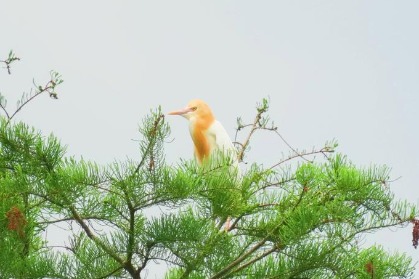China's wildlife populations thrive as habitat conservation efforts expand

The wild populations of animals such as giant pandas, crested ibises and Asian elephants in China have continued to grow, and their habitats and breeding environments have steadily improved in recent years, the National Forestry and Grassland Administration announced on Monday.
"China is focusing on building a natural protected area system with national parks as the mainstay, which will be the largest national park system in the world, protecting over 80 percent of the country's key wildlife species and their habitats," the administration said.
Monday marks the 12th World Wildlife Day. The administration said that the improvement of ecosystems driven by the protection of flagship species is inseparable from China's continuous improvement of its policy and legal systems, increased financial investment and coordinated efforts to promote in-situ and ex-situ conservation.
China is home to approximately 3,100 species of terrestrial vertebrates and 130,000 named insect species. It also has over 38,000 species of higher plants, including more than 4,000 rare and endangered wild plant species.
According to the latest monitoring results, the wild population of giant pandas has increased from about 1,100 in the 1980s to nearly 1,900. The snow leopard population has recovered to over 1,200, and the number of Siberian tigers and Amur leopards have increased from 27 and 42, respectively, at the start of the national park system pilot in 2017, to around 70 and 80.
The crested ibis population has increased from seven at the time of its discovery to over 7,000, and the Tibetan antelope population has recovered from 60,000 to 70,000 in the late 1990s to over 300,000.
Additionally, the Abies beshanzuensis, which numbered only three when discovered, now has over 4,000 reintroduced into the wild. The Carpinus putoensis, with only one individual found initially, now has over 4,000 reintroduced.
In recent years, China has continuously improved its legal and regulatory systems for wildlife protection, adjusted and released the lists of nationally protected wild animals, plants and published the list of important terrestrial wildlife habitats, according to the administration.
Currently, the country has established a number of flagship animal protection research centers for species such as giant pandas, Asian elephants, pangolins, Pere David's deer, blue-crowned laughingthrushes and crested ibises.
The National Forestry and Grassland Administration said it will continue to enhance the protection and management of wildlife through strengthened monitoring and habitat conservation, comprehensively improving the capacity and level of wildlife protection, and promoting the modernization of harmonious coexistence between humans and nature.
- China revises regulations on protection of new plant varieties
- China launches mandatory audits to bolster personal information protection
- Delivering social benefits
- Shenzhou XIX crew returns safely to 'beautiful, blue' Earth
- Ordinary work, extraordinary workers
- AI agent to improve international law services in Shanghai





































